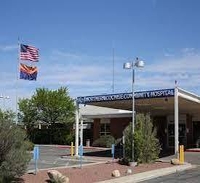
 |
|

|
SECURITY PLAN DEPARTMENT: Safety SUBJECT: Security Plan
REFERENCES: CMS Requirements. SCOPE: All NCCH Staff. POLICY: Security Plan PROCEDURE:
2. Corrective actions as warranted, to reduce the risk of recurrence. 3. Annual evaluation of objects, scope, performance, and effectiveness for the Security Management Plan. 4. Provision for orientation for all personnel and annual in-service for personnel in those areas determined to be sensitive by the Security Management Plan. Mission/Vision:
Responsibility for Enforcement:
Addressing, Reporting, and Investigating Security Incidents:
2. Any vandalism committed at the hospital or rural health clinics. 3. Any assault of a patient, visitor, or employee while on hospital premises. 4. Doors that do not lock correctly. 5. Any suspicious activity by visitors, or employees that may affect the safety and security of the organization. 6. Any traffic accidents that occur on the organization's campus. The Risk/Safety Officer will investigate all security incidents in a professional and confidential manner. Any traffic accidents will be reported to the Police Department for investigation. Any incident involving theft, vandalism, or assault may be reported to the Police Department for further investigation. Follow-up investigation will depend on the severity and magnitude of the incident as determined by the Risk/Safety Officer or CEO. Identification of Patients and Hospital Staff:
2. All employees are expected to wear their ID Badge (see employee handbook, pg. 11). These badges have a white background with the organization name, employee name, and department the employee is assigned to. 3. Clinic or Allied Health personnel are expected to wear identification provided to them by their physician's office (uniforms with names provided by Tuscon Heart Group, name tags from office). 4. Physicians are expected to wear identification either on their lab coat or scrubs when in the hospital and/or rural health clinics. 5. Hospital volunteers wear blue jackets with name tags signifying hospital volunteer. 6. All visitors and family members shall sign-in and obtain a (disposable) Visitor's Badge. All vendors who are not in uniform shall obtain a durable Visitor's Badge that shall be surrendered prior to departing the facility. Access Control to Sensitive Areas:
Each area identified as sensitive will be required to have a written policy providing for the control of access to the area by the organization's staff and/or visitors and to provide a copy of such policy to be incorporated in the Security Management Plan. Vehicular Access to Urgent Care Areas:
Education and Orientation:
Annual in-service is provided for all employees through the SWANK training system. The in-service includes:
2. Emergency procedures for security incidents. 3. Reporting procedures for security incidents. Emergency Security Procedures:
2. All patients have the right to feel safe, secure, and independent in the hospital/rural health clinic environment. Patients who become confused and wander will need close observation. A nursing assistant or nurse will remain in the dining room wile any patient is still there. 3. When an employee believes that a major security incident has occurred (witnessed theft, vandalism, hostage situations, violent behavior by anyone) he/she should call 911 immediately to get help from the Police or Sheriff's Department and call "CODE GREEN" if instructed by the department manager or charge nurse. 4. When an employee believes that an infant or child has been abducted from the hospital or is in danger of being abducted, he/she should call "CODE PINK" immediately so hospital exits can be secured and call 911 for police assistance. 5. When an employee receives a bomb threat, procedures for obtaining information should be followed. Once information has been obtained, call 911 to notify Police and Fire Departments for assistance. Call "CODE YELLOW" as instructed, to initiate patient/visitor movement away from suspected bomb area. 6. During any security risk incident, the doors will be closed and secured. Personnel will be assigned to the doors to monitor anyone coming and going. If it becomes necessary to detain someone, police will be asked to assist. Hospital personnel should not risk harm to themselves or others during any security incident. Security Escalation Levels:
Security Level 2 = Planned Event, Known Threats, Incidents Near NCCH Property Security Level 3 = Credible Threat, High Profile Patient, Patients That May Cause High Emotional Impact on Local Community, Etc... (Semi-Lock-Down Condition) Security Level 4 = Total Lock-Down Situations Involving Media/VIP's/Public Figures/Public Officials:
2. VIP's/Public Officials 3. Interviews/Pictures Safety Committee Monitoring and Evaluation:
Each year the Safety Committee will perform an evaluation of the Security management Plan regarding the objectives, scope, performance testing, and corrective actions to the Governing Board. SAFE-PLAN-014-1 |
|
|||||||||||||||||||||||||||||
| Northern Cochise Community Hospital | 901 W. Rex Allen Drive | Willcox, AZ 85643 | (520) 384-3541 | |||||||||||||||||||||||||||||||
| ©2025 FastHealth Corporation Terms Privacy | US Patent Numbers 7,720,998 B2, 7,836,207 |